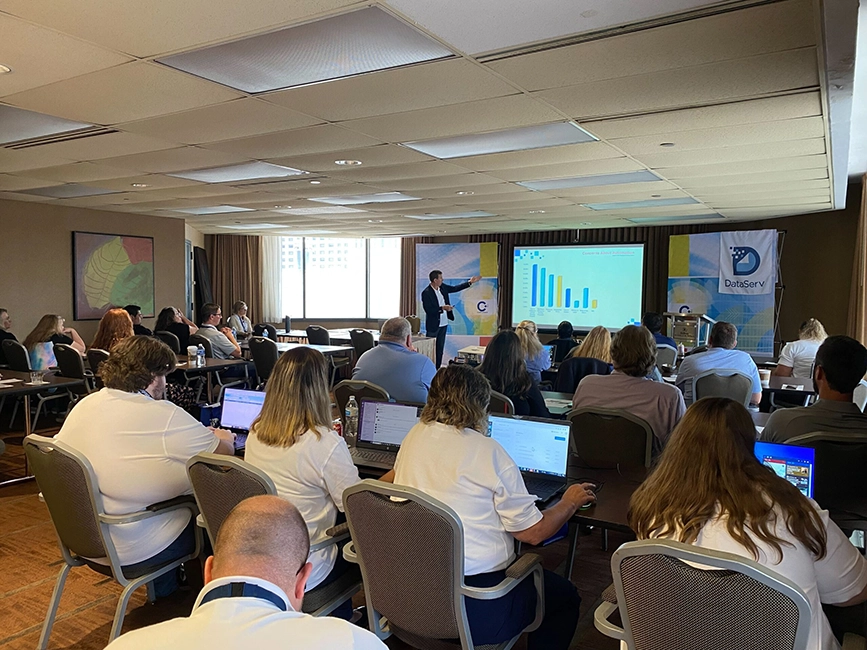Sometimes it’s the little things: It’s the invoice that disappeared in routing, or the vendor who didn’t receive payment because the master file didn’t get updated so it was sent to the wrong address or the wrong ACH account. It’s the things that take a little extra time when they have to be done, but there’s never enough time to fix them definitively.
Sometimes it’s the big things: It’s working to increase compliance and minimize risk while being able to accurately project required cash-on-hand and liabilities. It’s needing to close every accounting period without relying on blind guesses.
Every AP professional has felt this pain. We’d all like to fix it, but first we have to be able to see it.
It’s easy to believe that the problem is time. No one in your department ever seems to have any to spare. They do so much manual work — whether it’s chasing people down for approvals, or data entry, or filing, or resolving vendor issues — whatever the tasks are that consume their day.
Luckily, our clients find that there is a way to avoid most of those pain points without increasing payroll.
Offload the Repetitive Tasks
First off, putting the data capture process on someone else’s plate allows you and your staff the time and capacity to get to higher-level tasks. While it might seem cost effective to process invoices internally, the Association for Image and Information Management (AIIM) says the average is between $10-$20 per invoice. And when it comes to staff utilization, not only are you paying for staff to perform the tasks, you’re paying someone to train them and manage them as well. That’s a lot of staff hours that could go into refining your process, improving vendor relationships, and fixing all those problems that plague you month after month.
It’s Not Just the Time, it’s What You’re Able To Do with It
And that’s where visibility becomes so important. When everyone who is part of your AP process can see the status of every invoice before it goes into the ERP, you have the power to be proactive about potential problems rather than reacting to the crisis of the day.
It’s estimated that AP automation can afford a company up to 45 days of advance visibility compared to manual systems. That increased visibility provides insights into the issues but also the lead time to address the issues you are now able to see. This can result in significant benefits in four distinct areas:
Focus on Fixing Exceptions Instead of Recreating the Rules
When you use the “rules” to automate the bulk of your invoices, your staff has time to not only put out the fires that exceptions can create, but to correct whatever caused the exception. Offloading data capture and document management not only gives you advanced visibility, it frees you to address every situation that comes from that visibility. That means your staff can focus on exceptions, refining your process, working with vendors, cleaning up vendor master files.
Not only does automation give your staff more time, the process actually provides them with the information they need to avoid future issues. For instance, when we receive new invoices and select vendors from your vendor master file in order to assign the invoice, one byproduct is that we’re constantly providing information about the accuracy of the vendor master file. This helps you clean up your file. If the vendor can’t be verified in the system with matching information such as name and address then it will be pushed to your experts as an exception.
If your staff is handling these errors as they are identified it creates a self-cleansing process, resulting in a gradual, continuous audit of your master data.
Take Advantage of Discounts and Avoid Late Fees
In a manual process invoices sit on someone’s desk or in someone’s email until they’re entered into the ERP. Invoices that fall through the cracks not only increase the cost through missed discounts or additional fees, but often also mean your staff will be rushing through processing and taking calls from vendors who want to know when they can expect payment.
When you and your staff have visibility into the status of outstanding invoices you can plan payment processing to make the most of opportunities to save money. And if you do have a vendor call for a status update (although they have visibility through a Vendor Portal as well, so those calls become much more rare) your staff can answer their questions and resolve any issues quickly even from remote locations.
Manage Cash Flow and Predict Future Cash Needs
None of us like surprises when it comes to cash flow. When you have visibility into every invoice that is out for approval, or approved and scheduled for payment, you greatly reduce the chances of unexpected demands on your cash. You’ll be able to predict future cash needs and close financial periods with confidence. When you have that level of control, your AP department becomes a dependable predictor of your company’s financial health.
Evaluate Workflow and Productivity
Finally, you’ll have the intel you need to identify inefficiencies, not only in your process but also in your team performance. You’ll know which approvers are generally slow to sign off on invoices and you can explore whether the problem lies with the invoices, the vendors, or the approver. You’ll know when you have staff members who are under-utilized or overwhelmed. You can make adjustments to workload allocation or resolve vendor issues to alleviate the slow downs. You can intervene with underperforming staff. You can reassign tasks so that the workload is more evenly distributed. Whatever action you need to take to make the best use of your most important resource, you can do that only if you can see where the issues exist.
If you’re looking for more control and less stress in your AP department, talk with one of our Account Executives about an automation solution that will give you the visibility to make it happen.





























